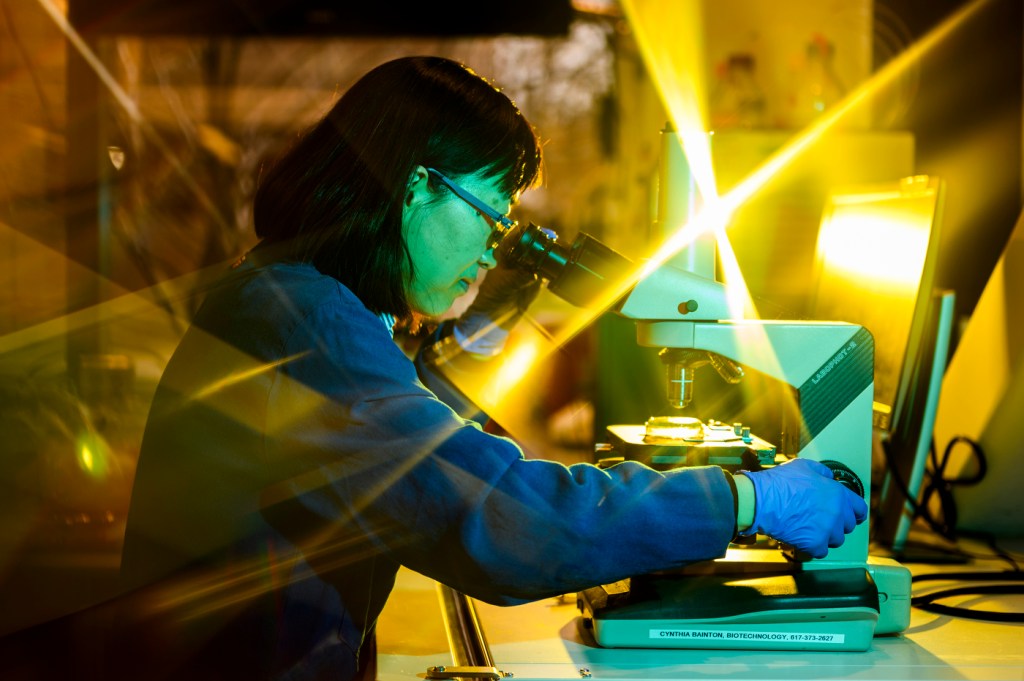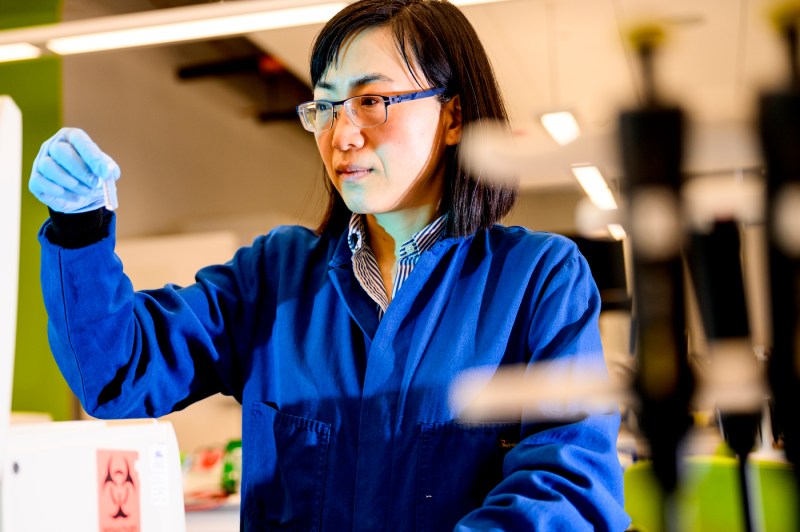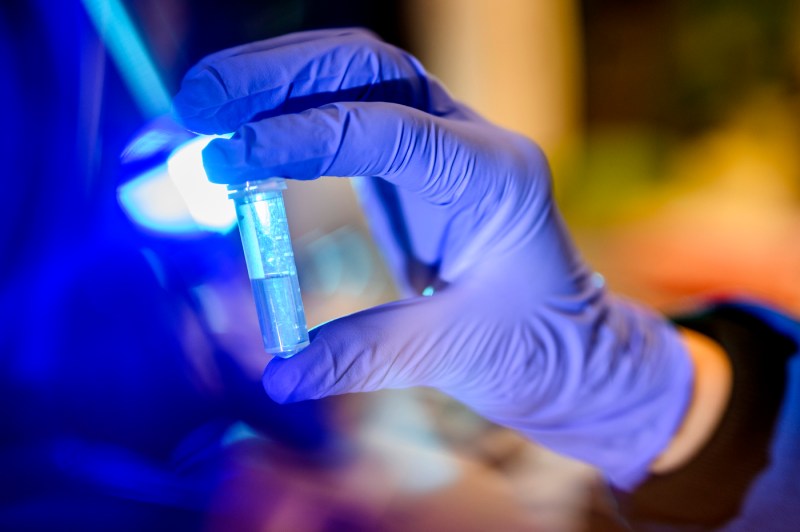Northeastern scientists propose AI framework for mass-manufacturing of stem cells for regenerative medicine
An innovative model lays groundwork for mass-manufacturing of pluripotent stem cells for regenerative medicine and therapies of the future.

Some stem cells have a natural ability to divide into more cells and develop into various specialized blood, bone or muscle cells. These pluripotent stem cells offer great promise for new cell treatments and regenerative medicine, researchers say.
A new study by a group of Northeastern University scientists shows that artificial intelligence can be used for the large-scale manufacturing of pluripotent stem cells, which could be used in the treatment of cancer, Alzheimer’s or Parkinson’s, to repair spinal cords or counteract aging.
The researchers say their innovative modular framework, Biological System-of-Systems, sets the fundamental stage for understanding and predicting successful cell cultivation.
“It is a frontier,” says Wei Xie, assistant professor of mechanical and industrial engineering, who was the primary investigator for the research. “Northeastern has started to take the lead on new generation bio-drug manufacturing and automation.”

Xie and her co-authors recently published two papers that propose models that will help understand and predict the fundamental mechanisms happening in a singular cell and in a cluster of cells to achieve successful cultivation of healthy human induced pluripotent stem cells, or iPSCs, at scale.
There are different types of stem cells, including embryonic stem cells found in the early stages of embryo development; adult stem cells that can replace damaged cells; and so-called induced pluripotent stem cells, produced in the laboratory from adult stem cells made to behave like embryonic stem cells.
Because of their regenerative capabilities and potential to transform into any cell type in the body, iPSCs have a huge potential market to support various treatment and research applications, Xie says. They could be used for regenerative medicine and cell therapies to counteract global population aging, diseases such as cancer, Alzheimer’s or Parkinson’s, or to repair spinal cord and other injuries. Clinical trials of new drugs, she says, will also need a large stem cell supply of high quality.
That is why researchers and industry collaborators are already thinking about large-scale iPSC manufacturing and automation, Xie says.
“Manufacturing of the future involves complex cyber-physical systems [which seamlessly integrates computation and physical components and connects them to the Internet and to each other],” Xie says. “It should be fast, flexible and robust so that if iPSCs need to be differentiated to a different cell type, it doesn’t take a lot of [additional] expensive experiments and a lot of time.”
AI and machine learning can help that, she says.


Xie and her research team focused at first on understanding the basics — cellular metabolisms, or life-sustaining biological, physical and chemical processes and their interaction, in a single human iPSC.
“A cell is a very complex system,” Xie says.
Each cell is composed of a complex metabolic and gene network; ribonucleic acid, or RNA, essential for most biological functions; proteins and so on. This system behaves differently in different conditions. That affects a cell’s intake of nutrition, for example, and eventually impacts the quality of the cells produced.
To learn the optimal critical parameters for growing an iPSC in a laboratory, the scientists developed a model that can predict cell response to changes in the environment and help control the cultivation process. The framework uses both mechanistic models built on existing knowledge of natural sciences and interpretable AI.
With the help of the model, scientists can select the best cell culture conditions and improve productivity, while ensuring the quality of the cell product.
Featured Posts
The first model describes and learns from growing one layer of stem cells in a laboratory dish, Xie says, in a consistent environment.
“This means that we more like closed the gap for the first stage,” Xie says.
To support large-scale manufacturing, the scientists use suspension bioreactors, or vessels that sustain a biologically active environment, to grow more complex three-dimensional iPSC clusters, or aggregates, similar to the way stem cells grow during pregnancy. Bioreactors provide a controlled environment through regulation of factors such as temperature, oxygen concentration, nutrient supply and agitation rate.
Cells grow rapidly and interact with each other in the bioreactor on three levels: metabolic reactions within cells, diffusion of nutrients and other molecular substances necessary for metabolism through the cell aggregates (cell-to-cell interaction), and aggregates interactions with the fluid around them.
It is challenging to grow larger aggregates of healthy uniform cells, she says. Cells located at the core of the aggregate receive less nutrition and oxygen while being affected by extra metabolic waste buildup.
To take into account every aspect of the complicated cultivation process, Xie and her research team proposed an innovative biological system-of-systems framework, or Bio-SoS. The Bio-SoS model has a modular design, allowing it to consider each level of cell interactions, combine data from different cell growing strategies and improve predictions.
Xie’s group validated each model individually with experimental data from existing literature on iPSCs multiplication. Then they validated the integrated Bio-SoS model both for single layer culture and aggregate cultures.
But there are other complex factors such as gene expression, Xie says, when a gene is “turned on” to produce the specific biological molecule encoded by that gene, or protein expression. That also needed to be taken into account to develop a working iPSC manufacturing process with the optimal strategy. This is why interpretive AI was integrated into the framework — to process and extrapolate existing limited data to answer critical questions.
Interpretive AI allows scientists to understand the reasoning behind outcome predictions and decisions made by the model. In the future, when there is better understanding of the processes within one cell and cell interaction, and more data becomes available from other experiments and sources, Xie says, the Bio-SoS model can learn, expand and become better.
Northeastern is able to conduct such research, Xie says, because of the accumulated expertise — the university’s researchers have devoted a lot of time to understanding this problem. Not many universities can do it, Xie says.











